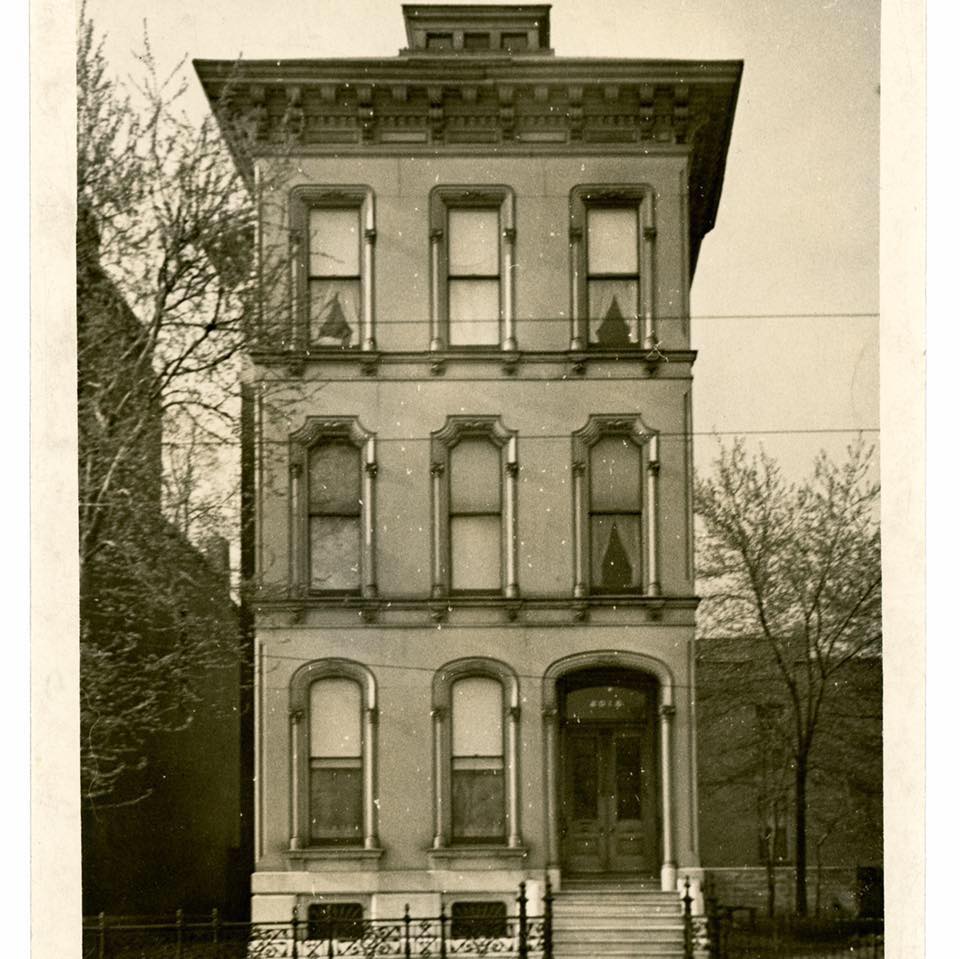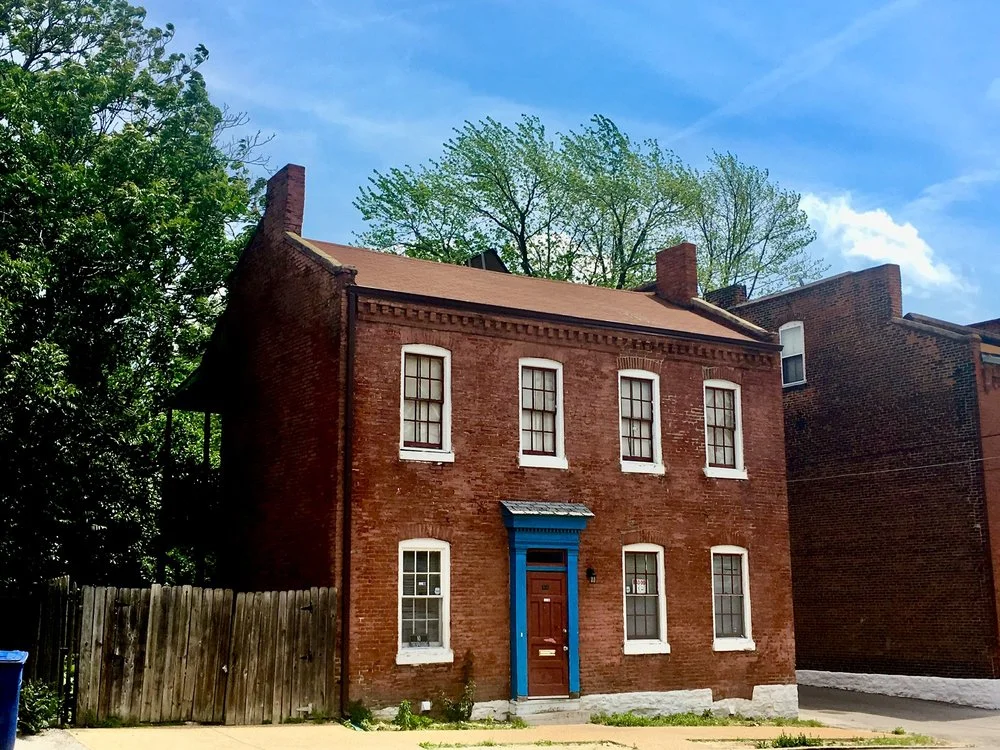This set of Row houses along Salisbury Street across from Hyde Park were built around 1860-1865 in the Federal transitional style. In the 1860s and 1870s the German neighborhood of Hyde Park grew from being a small river town that had recently been annexed by the city of St. Louis into a densely populated urban center. As development pushed westward, Salisbury became one of the main thoroughfares through the neighborhood, as it still is today, and a number of homes and businesses were built along the street. By 1875, the Compton and Dry map shows the extent of the development in the area to the south of the park, showing how the area had experienced the effects of urban expansion in its southern portion by that point. By 1900, the area had become a diverse mixed income neighborhood with a number of industries, and workers would have resided in Row houses such as these when working at the factories in the neighborhood and along the Riverfront. However, the combined effects of white flight and redlining, along with the highway construction which split up the neighborhood, caused Hyde Park to decline in the mid and late 20th century. There was an attempted revitalization effort in the 1980s that saved a number of buildings in the neighborhood, but ultimately did not revitalize the whole area. However, another revitalization effort is currently underway, and many buildings such as these Row houses have already been restored.
The Row houses on the 1875 Compton and Dry map




